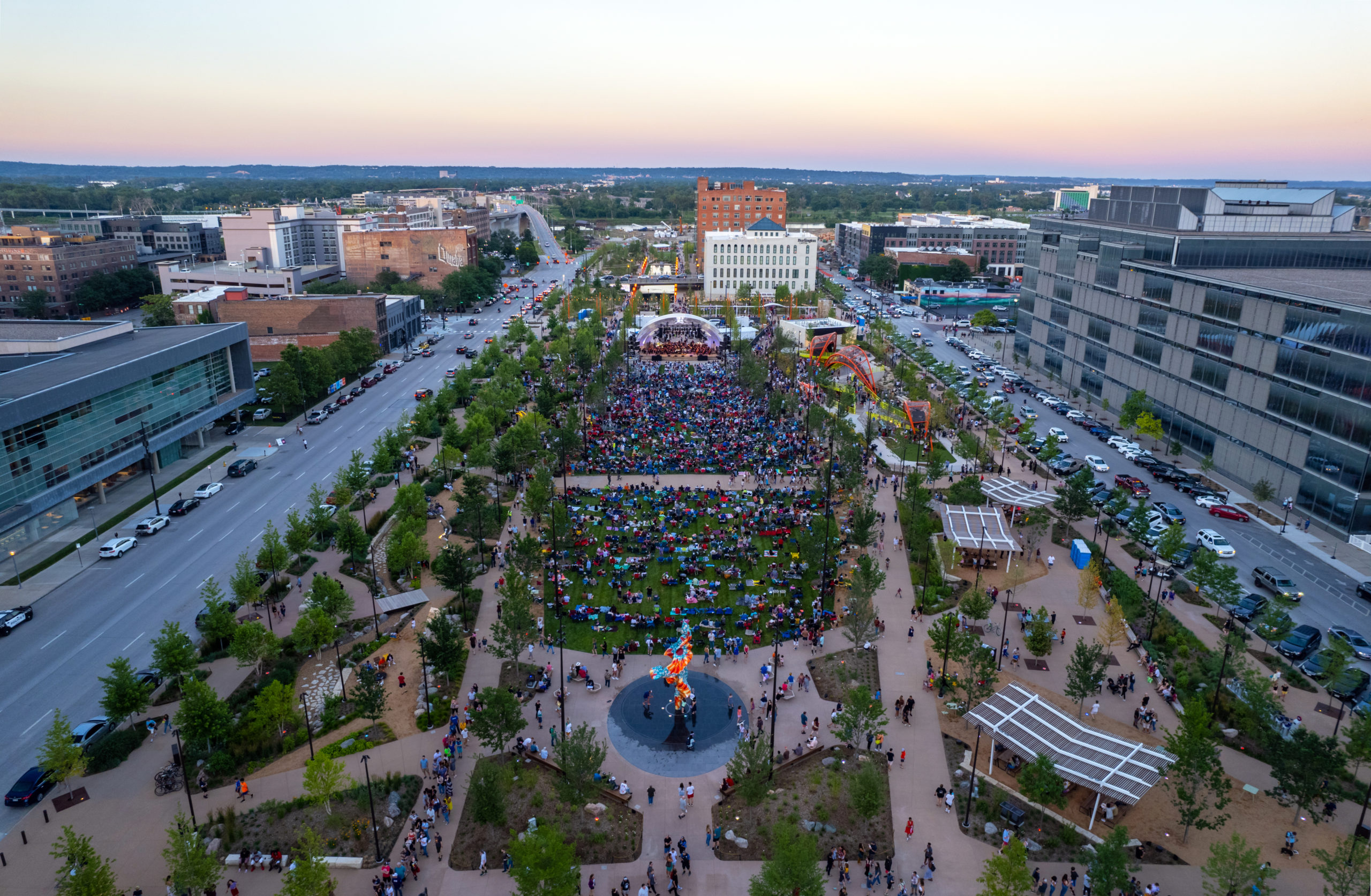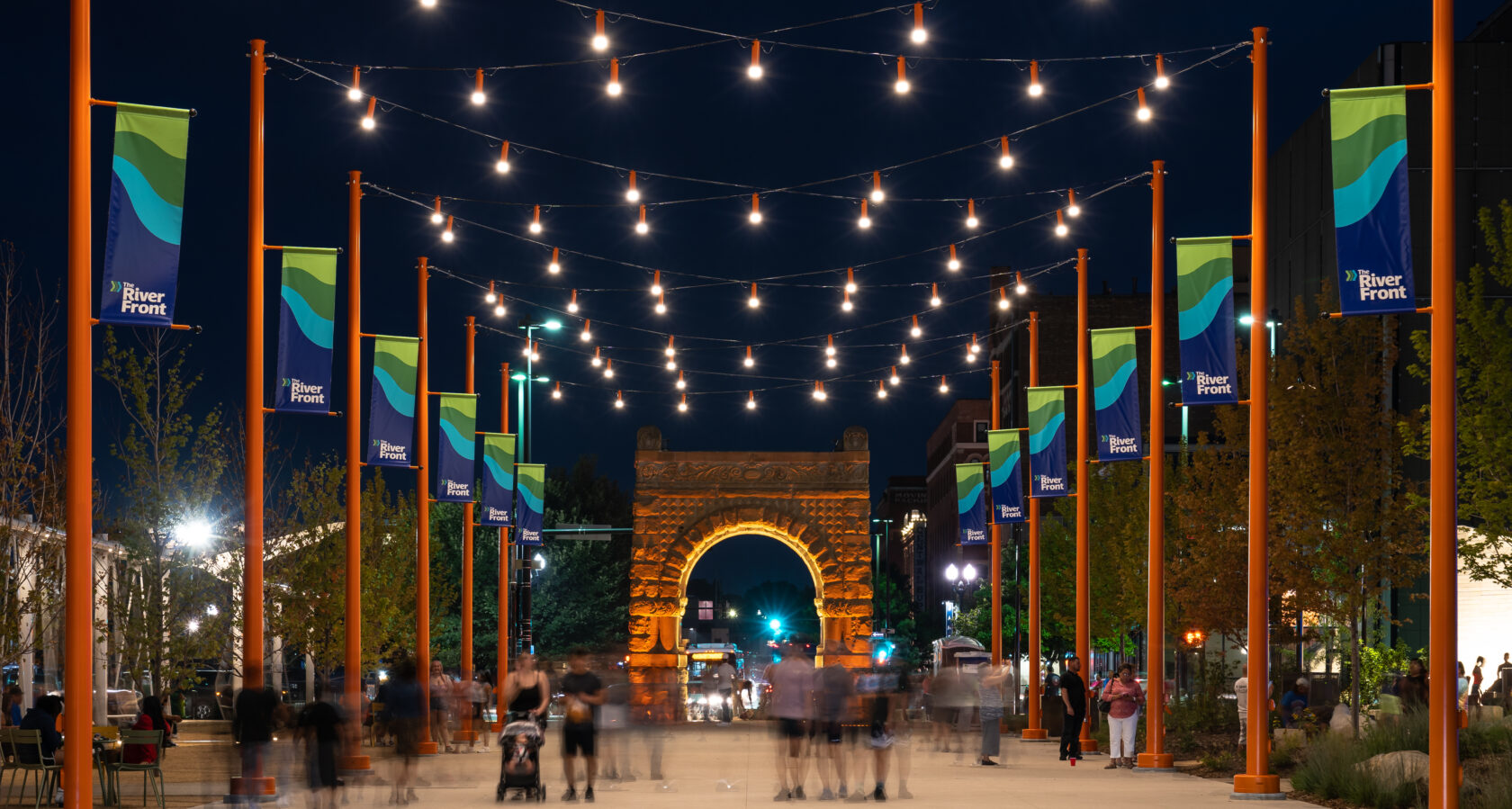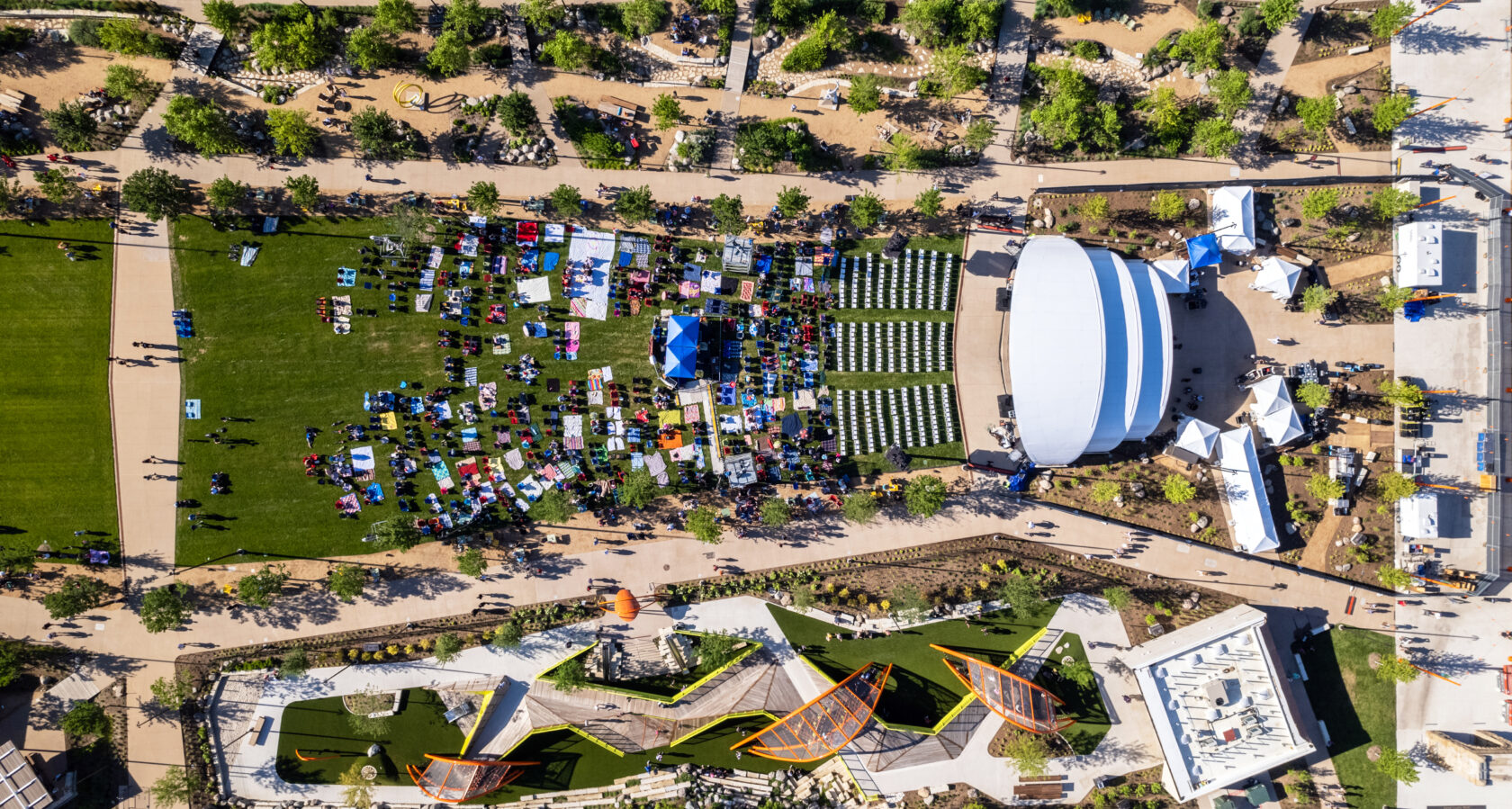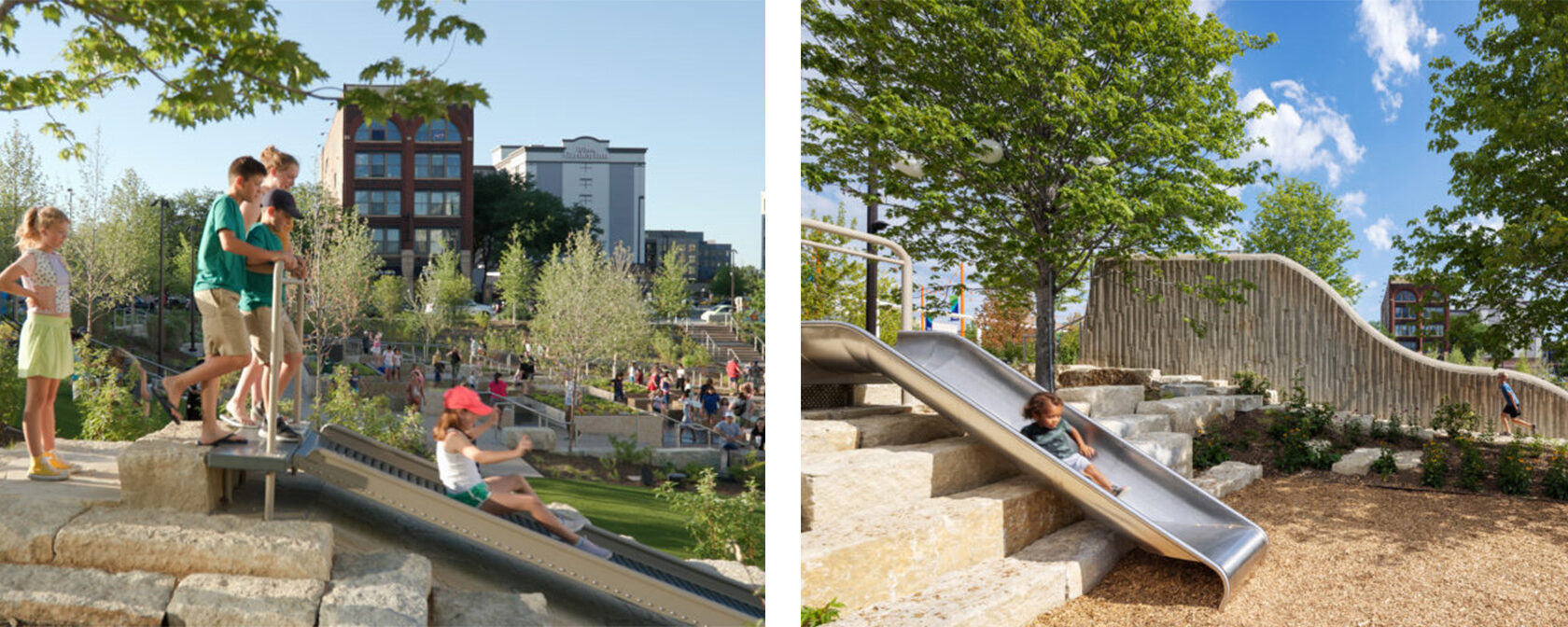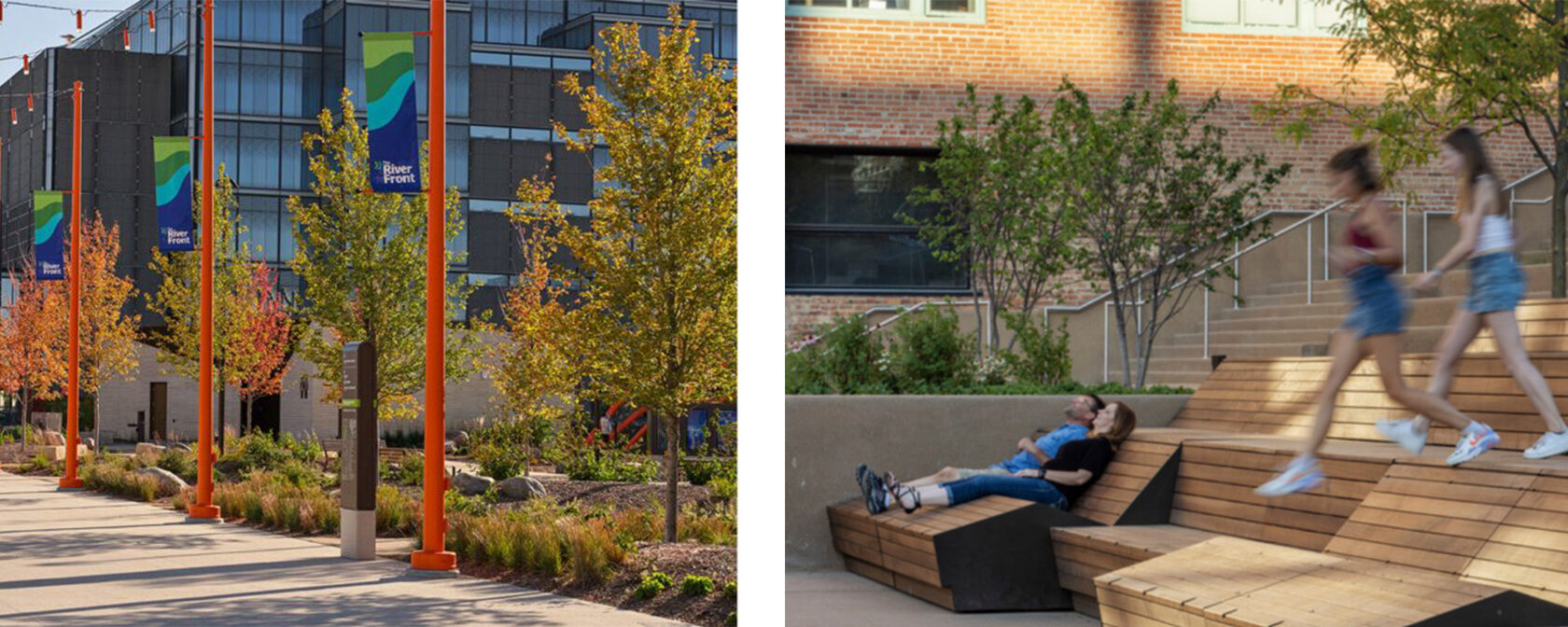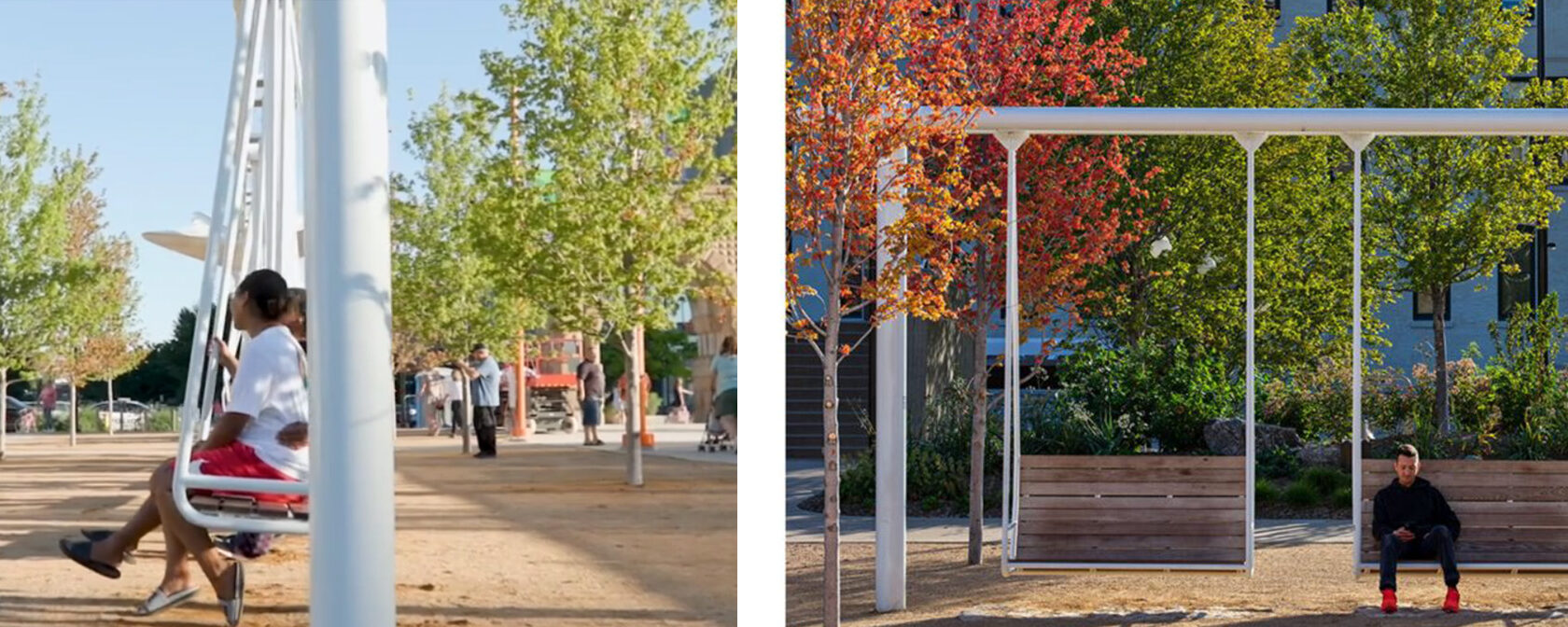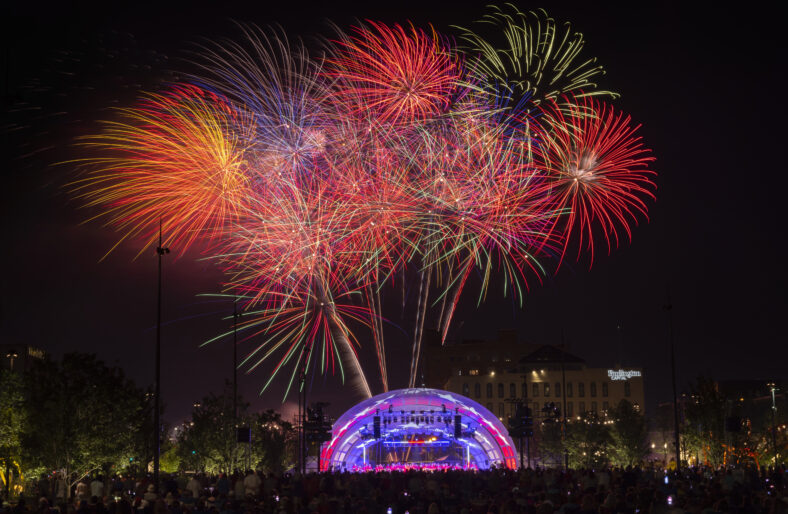Gene Leahy Mall sits in the heart of downtown Omaha. Its renovation and reimagining is an essential component of the Riverfront Revitalization Master Plan, which reconnects the downtown Omaha and the Missouri River for the first time in several generations. Constructed in 1977, the 14.8-acre park was built in a wave of urban revitalization that brought green space to the center of the city. As the downtown changed, the steep edges of the sunken park with a meandering lagoon at its center presented challenges of access, circulation, and activation.
Revitalization is centered on the impetus for a more active place, with diverse social and recreational areas. The mall site is re-graded to return pedestrian access at the street level, and organized around a formal body of water, including a central event lawn and performance pavilion, multi-use social spaces, a sculpture garden, a dog park, an iconic children’s play area, an interactive water feature, restrooms, and a games area. Water-efficient irrigation, bioretention facilities, and specialized soils ensure the long-term health of the native and drought-tolerant trees and plantings parkwide.
The project’s guiding principle was to physically connect the parks and the riverfront and connect people together with thoughtful, amenity-rich open space. Prior to the revitalization, all three parks were rarely used and most utilization was during the lunch hour or for large-scale seasonal events. In GLM’s first year of operations (July 2022 –2023), there were over 1,000,000 visitors. From July – December 2023, an additional 1,000,000 visitors were seen for a total of 2,000,000 visitors in the first 18 months of operation.
Emerging as a vibrant hub of entertainment and culture, The RiverFront has catalyzed the growth of new businesses, residential properties and commercial ventures, underscoring the pivotal role of open and accessible spaces in enhancing community life. Completed on time and within budget, The RiverFront serves as a compelling case study illustrating how thoughtful urban planning and design can breathe new vitality into riverfront cities.
